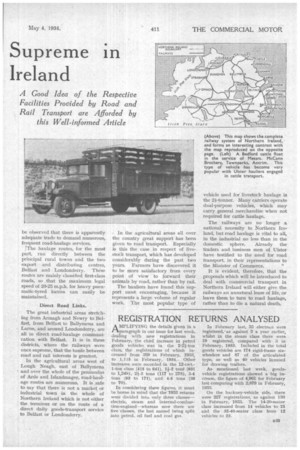REGISTRATION RETURNS ANALYSED
Page 49

If you've noticed an error in this article please click here to report it so we can fix it.
A MPLIFYING the details given in a I—lparagraph in our issue for last week, dealing with new registrations in February, the chief increase in petrol goods vehicles was in the 2-2i-ton class, the registrations of which increased from 359 in February, 1933, to 1,115 in February, 1934. Other increases were recorded in the 12-cwt,1-ton class (415 to 641), 4-2 tons (831 to 1,249), 2I-3 tons (117 to 278), 3-4 tons (83 to 171), and 4-5 tons (38 to 70).
In considering these figures, it must be borne in mind that the 1936 returns were divided into only three classes— electric, steam and internal-combustion-engined—whereas now there are five classes, the last named being split into petrol, oil fuel and coal gas.
In February last, 33 electrws were registered, as against 3 a year earlier, whilst in the steam class there were 19 registered, compared with 3 in February, 1933. Included in the total goods vehicles are 174 rigid-frame sixwheelers and 87 of the articulated type, as well as 40 vehicles licensed for drawing trailers.
As mentioned last week, goodsvehicle registrations showed a big increase, the figure of 4,961 for February last comparing with 2,879 in February, 3933.
On the hackney-vehicle side, there were 227 registrations, as against 130 in February. 1933. The 14-20-seater class increased from 14 vehicles to 21 and the 32-40-seater class from 12 vehicles to 23.




























































































